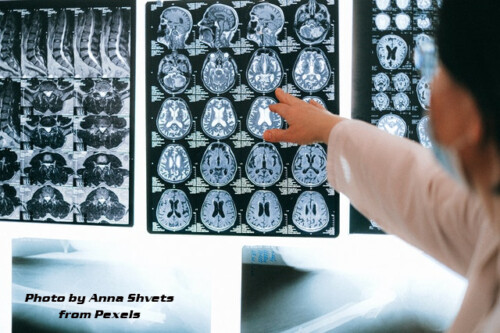Growing New Brain Cells – And Wiring Them Up
By
We grow new brain cells are entire lives, but the process slows down as we age. Exercise helps speed that process back up and get those brain cells working again.
Not too long ago, scientists believed that adults couldn’t grow new neurons in their brain. However, work over the last several years has debunked this myth. We now know that adults continue to grow new neurons throughout life, a process called neurogenesis. Yes, new growth slows down after middle age but it continues. However, there are things you can do to help keep a higher rate of new brain cell birth, which we’ll get into in a minute.
scientists believed that adults couldn’t grow new neurons in their brain. However, work over the last several years has debunked this myth. We now know that adults continue to grow new neurons throughout life, a process called neurogenesis. Yes, new growth slows down after middle age but it continues. However, there are things you can do to help keep a higher rate of new brain cell birth, which we’ll get into in a minute.
Continuing to grow new brain cells can help in a couple of ways. First, cells are mostly born into a region called the hippocampus, which is crucial for learning and memory. Maintaining neurogenesis helps maintain memory function. Second, keeping those new neurons coming seems to help with depression. The hippocampus is also crucial for stress regulation and neurogenesis is a necessary part of the way anti-depressants work. So, new brain cell birth is important for cognitive and emotional functions. We have referred to these in the past as your IQ and your EQ.
It’s also been known for some time that exercise increase the rate of neurogenesis. Many studies show that lab animals who are allowed to exercise increase the rate of new neurons born into their hippocampus, relative to those animals that don’t get to exercise.
Although these studies are difficult to do in humans (for technical reasons) several studies suggest that the same thing is going on. In human trials that compare groups who exercise to control groups, the exercisers consistently show improved cognitive skills and increased function of specific brain areas, including the hippocampus.
A new study by Wu et al. published in the September 18th, 2008 edition of the Journal of Applied Physiology also shows that exercise may increase the connectivity of new neurons. It’s not enough to make new neurons. You also have to wire them up to other neurons to get them fully integrated into brain circuits so they can do their thing.
On average, every neuron in your brain makes about 10,000 connections. It’s no good if a neuron is just sitting there talking to itself. It must become part of a network to have real value. When you learn things, you actually increase the connectivity between neurons, and that’s what’s most important.
In fact, the number of connections in your brain is probably much more important than the number of brain cells when it comes to retaining cognitive function. The new study by Wu shows that exercise increases both. It increases the number of new neurons being born and the amount of branching that each new neuron forms.
Neurons are shaped kind of like trees. The more branches they have, the more connections they can make. In Wu’s study, exercise increased the number and length of branches on new neurons.
Finally, the most important part of the new study looked at how exercise affects the rate of new brain cell growth and amount of branching as we age. Essentially, the researchers confirmed that the rate of neurogenesis declines as we age and that exercising in early middle age has a large affect on boosting the rate of new brain cell birth. Exercising in older age also increases neurogenesis, although to a lesser degree.
However, here is the interesting part. In their experiments, the sedentary rats had about the same length of neuron branches in middle age and in old age. But the exercising rats had much longer branches. In fact, the old exercisers had longer neuron branches than the younger sedentary rats. This is great news since many studies show that branch length and connectivity may be a better indicator of cognitive health than the number of new neurons born.
We know that life-long learning is one way to promote more neuron branching and connectivity. Now this new study shows that exercising can also do this for older aged adult brains.
The bottom line: physical exercise is a great way to keep your brain fit.
Reference:
Journal of Applied Physiology (2008) 105:1585-1594
ABOUT ARTICLE AUTHOR
Source: Free Guest Posting Articles from ArticlesFactory.com
Articles posted on this site are the works of their respective authors. They may be for informational or entertainment purposes and do not necessarily represent the views of this website nor imply endorsement by this website, nor endorsement of this site by the authors, nor do we get paid for posting articles. Nothing herein is intended to diagnose, treat or cure any disease. Please do your research and seek professional advice before using any information.


